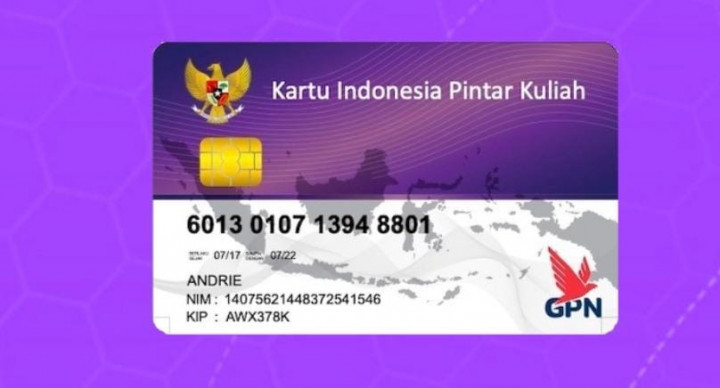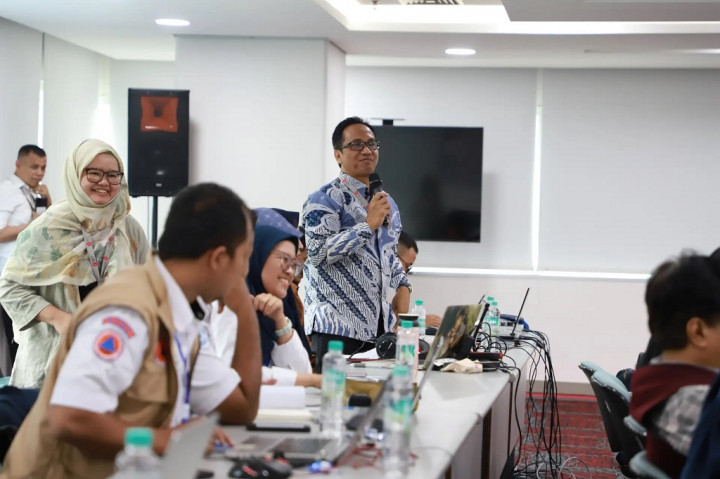TOEFL atau Test of English as a Foreign Language merupakan tes bahasa Inggris untuk Bahasa Asing. Sementara itu, IELTS atau International English Language Testing System ialah sistem tes bahasa Inggris untuk internasional.
Sertifikat TOEFL diakui oleh institusi pendidikan dan industri di 90 negara. Hal ini dikarenakan tes efektif untuk menilai kemampuan seseorang.
Hal ini membuat TOEFL dirasa sulit dan membutuhkan trik-trik khusus untuk menghadapinya. Melansir laman AkuPintar, berikut tips dan trik khusus agar dapat nilai TOEFL tinggi:
1. Teratur belajar Bahasa Inggris
Tes TOEFL sesuai namanya sama saja seperti tes-tes bahasa Inggris yang selama ini pernah diikuti di sekolah. Namun, tes TOEFL jauh lebih kompleks ketimbang tes harian bahasa Inggris di sekolah.Tingkat kesulitan soal di ujian TOEFL juga lebih tinggi dibandingkan dengan tes harian di sekolah. Sisi baiknya, karena ujiannya bahasa Inggris, persiapan yang dilakukan tentu adalah dengan belajar bahasa Inggris.
Untuk itu, luangkan waktu setiap hari, misalnya, selama satu jam untuk belajar bahasa Inggris. Lalu akan lebih baik lagi bila belajar dan latihan TOEFL dengan menggunakan buku latihan soal TOEFL, disertai dengan konsistensi belajar.
2. Perbanyak Latihan Mendengarkan
Menonton film di sini dapat termasuk dalam melatih kebiasaan dan keterampilan mendengarkan dalam bahasa Inggris. Pasalnya, seseorang akan membutuhkan kemampuan mendengarkan ini saat mengikuti tes TOEFL.TOEFL terdiri atas beberapa jenis tes, seperti TOEFL PBT (Paper Based Test), TOEFL CBT (Computer Based Test), TOEFL IBT (Internet Based Test), TOEFL ITP (Institutional Testing Program), hingga TOEFL Prediction. Soal TOEFL pada ketiganya berbeda.
Namun, tes TOEFL mana pun yang akan dipilih, semuanya pasti akan bertemu dengan soal-soal listening. Yang lebih penting lagi adalah berlatih listening secara mandiri karena disadari atau tidak, pelajaran bahasa Inggris di sekolah masih kurang membekali dengan keterampilan yang dibutuhkan.
3. Perbanyak membaca dan perkaya kosakata
Soal dalam TOEFL tergantung pada pilihan jenis tes yang dipilih. PBT, CBT, dan IBT, misalnya mencakup tes Writing.Pada jenis soal Writing, yang dibutuhkan tak hanya kemampuan grammar atau tata bahasa yang baik, tetapi juga vocabulary atau kosakata. Pada tes TOEFL IBT, misalnya, seseorang diharuskan menulis dua esai dalam waktu 50 menit, yang menyebabkan semakin kaya kosakata akan semakin baik.
Untuk itu, mulai saja dari membaca artikel pendek dalam bahasa Inggris. Lama-kelamaan, rasa ingin tahu akan membuat seseorang membaca lebih banyak.
Untuk memulai misi memperbanyak kosakata ini, baca saja yang ada dan abaikan kata-kata baru yang masih terasa asing. Jika ingin tahu makna kata tersebut dalam Bahasa Inggris jangan diterjemahkan ke dalam Bahasa Indonesia, melainkan gunakan kamus English to English atau search engine.
4. Berlatih membaca cepat
Pada setiap jenis tes TOEFL yang dipilih, akan ada soal-soal Reading. Pada TOEFL IBT, misalnya, waktu yang disediakan untuk Reading adalah 60 sampai 80 menit, bahkan waktu Reading TOEFL PBT lebih pendek, yakni 55 menit.Reading IBT sendiri terdiri dari 36 sampai 56 pertanyaan, sedangkan Reading PBT terdiri dari 50 pertanyaan. Jika mempunyai waktu satu menit untuk membaca soal dan menjawabnya, maka berapa menit yang dibutuhkan untuk membaca teksnya?
Sebagai gambaran, berikut contoh soal TOEFL yang disalin dari ETS TOEFL IBT Reading Practice Test:
Contoh soal
Directions: Read the passage. Give yourself 20 minutes to complete this practice set.The Rise of Teotihuacan
The city of Teotihuacan, which lay about 50 kilometers northeast of modern-day Mexico City, began its growth by 200 –100 B.C. At its height, between about A.D. 150 and 700, it probably had a population of more than 125,000 people and covered at least 20 square kilometers. It had over 2,000 apartment complexes, a great market, a large number of industrial workshops, an administrative center, a number of massive religious edifices, and a regular grid pattern of streets and buildings. Clearly, much planning and central control were involved in the expansion and ordering of this great metropolis. Moreover, the city had economic and perhaps religious contacts with most parts of Mesoamerica (modern Central America and Mexico).
How did this tremendous development take place, and why did it happen in the Teotihuacan Valley? Among the main factors are Teotihuacan's geographic location on a natural trade route to the south and east of the Valley of Mexico, the obsidian¹ resources in the Teotihuacan Valley itself, and the valley's potential for extensive irrigation. The exact role of other factors is much more difficult to pinpoint — for instance, Teotihuacan's religious significance as a shrine, the historical situation in and around the Valley of Mexico toward the end of the first millennium B.C., the ingenuity and foresightedness of Teotihuacan's elite, and, finally, the impact of natural disasters, such as the volcanic eruptions of the late first millennium B.C.
This last factor is at least circumstantially implicated in Teotihuacan's rise. Prior to 200 B.C., a number of relatively small centers coexisted in and near the Valley of Mexico. Around this time, the largest of these centers, Cuicuilco, was seriously affected by a volcanic eruption, with much of its agricultural land covered by lava. With Cuicuilco eliminated as a potential rival, any one of a number of relatively modest towns might have emerged as a leading economic and political power in Central Mexico. The archaeological evidence clearly indicates, though, that Teotihuacan was the center that did arise as the predominant force in the area by the first century A.D.
It seems likely that Teotihuacan's natural resources—along with the city elite's ability to recognize their potential — gave the city a competitive edge over its neighbors. The valley, like many other places in Mexican and Guatemalan highlands, was rich in obsidian. The hard volcanic stone was a resource that had been in great demand for many years, at least since the rise of the Olmecs (a people who flourished between 1200 and 400 B.C.), and it apparently had a secure market. Moreover, recent research on obsidian tools found at Olmec sites has shown that some of the obsidian obtained by the Olmecs originated near Teotihuacan . Teotihuacan obsidian must have been recognized as a valuable commodity for many centuries before the great city arose.
Long-distance trade in obsidian probably gave the elite residents of Teotihuacan access to a wide variety of exotic goods, as well as a relatively prosperous life. Such success may have attracted immigrants to Teotihuacan . In addition, Teotihuacan's elite may have consciously attempted to attract new inhabitants. It is also probable that as early as 200 B.C. Teotihuacan may have achieved some religious significance and its shrine (or shrines) may have served as an additional population magnet. Finally, the growing population was probably fed by increasing the number and size of irrigated fields.
The picture of Teotihuacan that emerges is a classic picture of positive feedback among obsidian mining and working, trade, population growth, irrigation, and religious tourism. The thriving obsidian operation, for example, would necessitate more miners, additional manufacturers of obsidian tools, and additional traders to carry the goods to new markets. All this led to increased wealth, which in turn would attract more immigrants to Teotihuacan . The growing power of the elite, who controlled the economy, would give them the means to physically coerce people to move to Teotihuacan and serve as additions to the labor force. More irrigation works would have to be built to feed the growing population, and this resulted in more power and wealth for the elite.
Directions: Answer the questions.
1. In paragraph 1, each of the following is mentioned as a feature of the city of Teotihuacan between A.D. 150 and 700 EXCEPT:
A. regularly arranged streets
B. several administrative centers spread across the city
C. many manufacturing workshops
D. apartment complexes
2. The word "ingenuity" in paragraph 2 is closest in meaning to:
A. ambition
B. sincerity
C. faith
D. cleverness
3. Which of the following is NOT mentioned in paragraph 2 as a main factor in the development of Teotihuacan ?
A. The presence of obsidian in the Teotihuacan Valley
B. The potential for extensive irrigation of Teotihuacan Valley lands
C. A long period of volcanic inactivity in the Teotihuacan Valley
D. Teotihuacan's location on a natural trade route
Hanya tiga soal yang disalin pada contoh soal TOEFL di atas. Masih ada tujuh soal lagi yang harus dikerjakan dalam 20 menit, sesuai instruksi di awal.
Jadi, inilah tips dan trik serta contoh soal TOEFL. Perlu diingat akan lebih baik untuk selalu siap sedia dengan mencoba mengerjakan soal dengan berbagai tipe agar lebih lancar dalam mengerjakan soal-soal tidak terduga. (Gabriella Carissa Maharani Prahyta)
| Baca juga: Simak Empat Tips Khusus Agar Nilai TOEFL Tinggi |
Cek Berita dan Artikel yang lain di
Google News

















